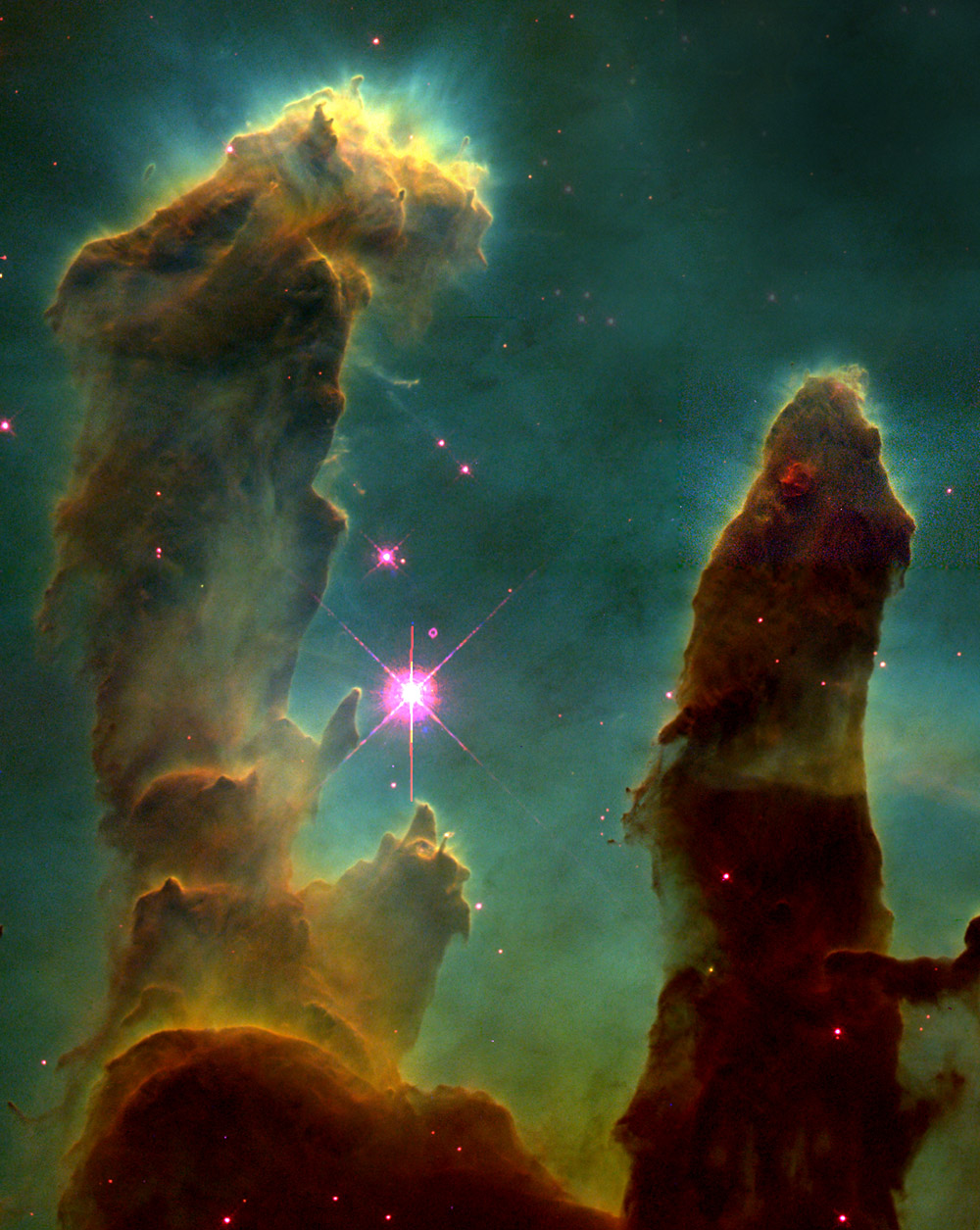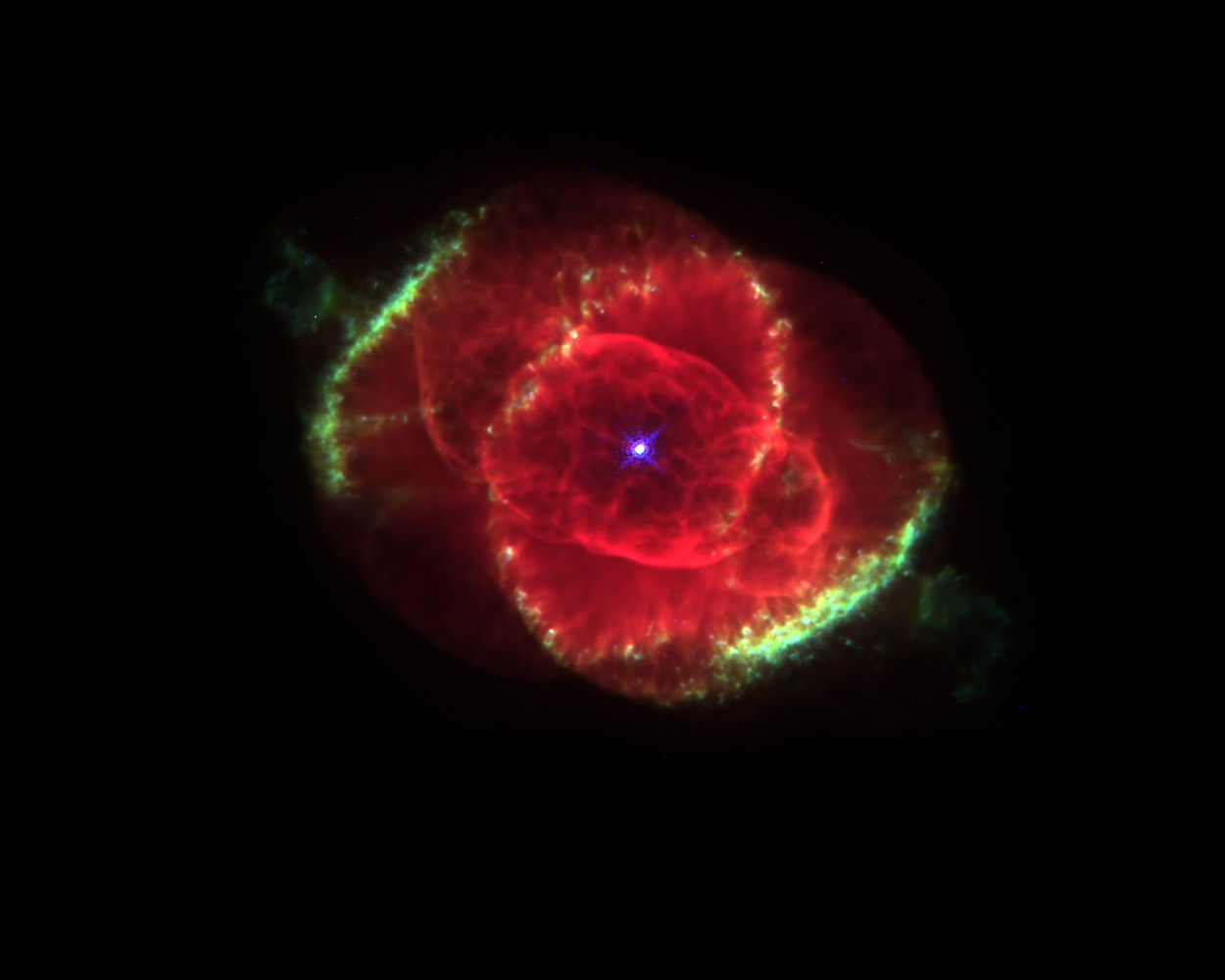
McMurdo Panorama from Mars

Earth scientists selected Low Ridge hill, a place with sufficient slant to give Spirit's solar panels enough sunlight to keep powered up and making scientific observations. From its Winter Haven, Spirit has been able to build up the above 360-degree panorama, which has been digitally altered to exaggerate colors and compressed horizontally to fit your screen. The long winter is finally ending in the south of Mars, and with the increasing sunlight plans are now being made for Spirit to further explore the rocky Columbia Hills inside intriguing Gusev crater. 

Echoes from the edge

As astronomers watch, light from the outburst echoes across pre-existing dust shells around V838 Mon, progressively illuminating ever more distant regions. This stunning image of swirls of dust surrounding the star was recorded by the Hubble Space Telescope in September of this year. The picture spans about 14 light-years. Astronomers expect the expanding echoes to continue to light up the dusty environs of V838 Mon for at least the rest of the current decade. Researchers have now found that V838 Mon is likely a young binary star, but the cause of its extraordinary outburst remains a mystery. 

The Antennae galaxies in collision

This is because galaxies are mostly empty space and, however bright, stars only take up only a small amount of that space. During the slow, hundred million year collision, however, one galaxy can rip the other apart gravitationally, and dust and gas common to both galaxies does collide. In the above clash of the titans, dark dust pillars mark massive molecular clouds are being compressed during the galactic encounter, causing the rapid birth of millions of stars, some of which are gravitationally bound together in massive star clusters. 

NGC 7635: The Bubble

Astronomer Eric Mouquet's striking view utilizes a long exposure with hydrogen alpha light to reveal the intricate details of this cosmic bubble and its environment. Although it looks delicate, the 10 light-year diameter bubble offers evidence of violent processes at work. Seen here above and right of the Bubble's center is a bright hot star embedded in reflecting dust. A fierce stellar wind and intense radiation from the star, which likely has a mass 10 to 20 times that of the Sun, has blasted out the structure of glowing gas against denser material in a surrounding molecular cloud. The intriguing Bubble Nebula lies a mere 11,000 light-years away toward the boastful constellation Cassiopeia. 

Light from the Heart Nebula

A close up spanning about 30 light years contains many of these stars is shown above . This open cluster of stars contains a few bright stars nearly 50 times the mass of our Sun, many dim stars only a fraction of the mass of our Sun, and an absent microquasar that was expelled millions of years ago. The Heart Nebula is located about 7,500 light years away toward the constellation of Cassiopeia. 

Atlantis to Orbit

Birds don't fly this high. Airplanes don't go this fast. The Statue of Liberty weighs less. No species other than human can even comprehend what is going on, nor could any human just a millennium ago. The launch of a rocket bound for space is an event that inspires awe and challenges description. Pictured above, the Space Shuttle Atlantis lifted off to visit the International Space Station during the morning of 2006 September 9. From a standing start, the two million kilogram rocket ship left to circle the Earth where the outside air is too thin to breathe and where there is little noticeable onboard gravity. Rockets bound for space are now launched from somewhere on Earth about once a week. 

Saturn at night

The above image of Saturn at night was captured in July by the Cassini spacecraft now orbiting Saturn. The above image was taken when the Sun was far in front of the spacecraft. From this vantage point, the northern hemisphere of nighttime Saturn, visible on the left, appears eerily dark. Sunlit rings are visible ahead, but are abruptly cut off by Saturn's shadow. In Saturn's southern hemisphere, visible on the right, the dim reflected glow from the sunlit rings is most apparent. Imprinted on this diffuse glow, though, are thin black stripes not discernable to any Earth telescope -- the silhouetted C ring of Saturn. Cassini has been orbiting Saturn since 2004 and its mission is scheduled to continue until 2008. 

Eclipsed moon rising over England

The resulting partial lunar eclipse was visible from the eastern Atlantic Ocean through Europe, Africa, and Asia and into the western Pacific Ocean. The darkest part of the lunar eclipse, when part of the Moon was completely shielded from sunlight, lasted about 90 minutes. Pictured above, a partially eclipsed Moon is seen rising over an estate in Huddersfield, England. The above image was taken far away from the house in the foreground, as only this would allow it to appear as angularly small as the half-degree Moon far in the background. A setting twilight Sun lit the foreground. The next eclipse of the Moon will occur in March 2007. 

Green Aurora Over Lake Superior

That was the experience of Jeff Hapeman last week when visiting the Pictured Rocks National Lakeshore in Michigan. On a quiet night toward the northern horizon over Lake Superior was a long lasting diffuse green aurora. The above image was taken in an effort to capture the sense of wonder one gets when watching an auroral display. Auroras are sparked by energetic particles from the Sun impacting the magnetic environment around the Earth. Resultant energetic particles such as electrons and protons rain down near the Earth's poles and impact the air. The impacted air molecules temporarily lose electrons, and when oxygen molecules among them reacquire these electrons, they emit green light. Auroras are known to have many shapes and colors.


















Comment